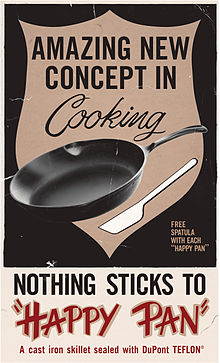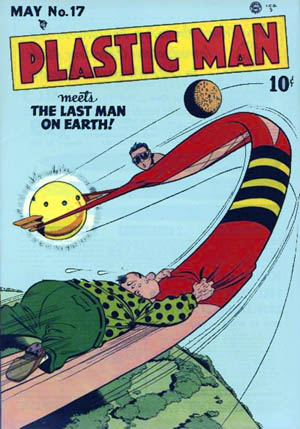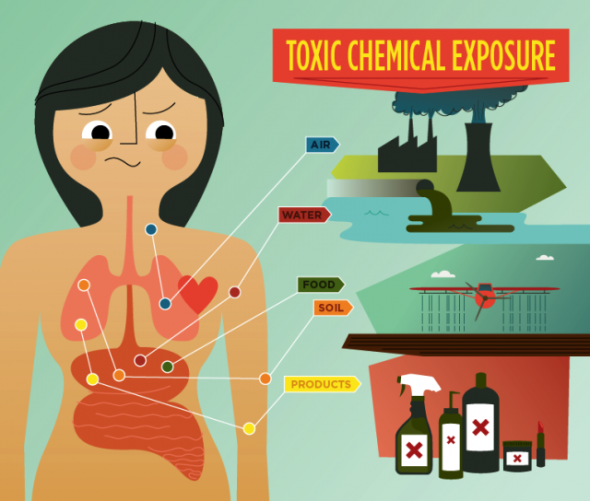The Plastic Man
Posted: August 30, 2015 Filed under: Chemicals | Tags: 3M, Agent Orange, Chemours, Dry Run Creek Landfill, DuPont, HDPE, LDPE, Manhattan Project, Mississippi River, Monsanto, Ohio River, Parkersburg WV, PCBs, PFOC, Plastics, PP, Sauget IL, Scotchgard, Solutia, Union Carbide, Zonyl Leave a commentSometimes it is embarrassing to be associated with an industry such as the Plastics industry. Even though what we do is environmentally friendly (keeping already existing plastics out of the landfill) and the plastics that we are dealing with HDPE, LDPE and PP “seem” relatively benign. However, it does not appear that we can trust any assurances from the chemical industry.
The Huffington Post has a damning article titled “Welcome to Beautiful Parkersburg, West Virginia” by Mariah Blake (see Information Resources at the end of this blog for a link). It is a saga yet to reach it’s conclusion. It is the story of the Washington Works, a plant in the DuPont family of companies and the Dry Run Creek landfill. It is the story of intentional deception on the part of DuPont. It is the story of how our modern day conveniences and ease in living are often obtained through the horrendous suffering of everyday people while the corporation – inherently different from a small business where someone actually cares and there is a “buck stops here” sense of responsibility – grows enormously wealthy and seeks to shed any liability for its actions in doing so.
DuPont assured the family on who’s farm it wanted to obtain a landfill that it would only dispose of non-toxic material like ash and scrap metal. It is easy for me to believe that with large corporations the left hand may not know what the right hand is doing. That the person making these assurances believed them. That whoever was responsible for supervising the transport and disposal of toxic substances in that landfill may have known nothing about such assurances. This is one of the more troubling aspects of corporations – no direct human responsibility as the corporation is a non-human entity – even though human beings are employed by it.
I know it has long been troubling for me to see the Teflon (or its more recent similarly structured derivatives) non-stick coating on my electric kettle and skillet flake off and I’ve not felt entirely reassured that it is safe and inert. There seems to be a good reason for my reluctance and distrust of the chemical industry in general. Thankfully, the last electric skillet I purchased has what appears to be a very durable surface that does not flake off, although it may subtly disintegrate imperceptibly over time. There is no way for me to be certain.
The histories of our various chemical giants like DuPont, 3M, Monsanto and Union Carbide just to name some of the more recognizable is littered with enough worrisome behavior as to justify a degree of bad karma for these businesses. After congressional hearings in 1934, DuPont (who had “supplied half of the world’s gunpowder and was expanding into bombs and poison gas. But it was drawing fire on the home front”) was advised that “the only way DuPont could escape the ‘atmosphere of plague’,” was to “transform its image from that of a purveyor of doomsday weaponry to a maker of peacetime products that benefited American society”.
Thus was born the “Better Things for Better Living … Through Chemistry” blueprint for the future. “Through the marvels of science, synthetic materials would free people from mundane tasks, allowing them to lead lives of leisure and ease.” DuPont’s legacy with Teflon traces itself back to its use in coating “the valves and seals of the Manhattan Project’s uranium enrichment equipment”. There was also created the idea of The Plastic Man in the late 1940s. “This fortunate being would enter a world of ‘color and bright shining surfaces, where childish hands find nothing to break … no crevices to harbour dirt or germs’. He would live his life ‘surrounded on every side by this tough, safe, clean material which human thought has created’.” There was even a comic book series of that name.
It can be frequently seen that large corporations create smaller entities to shirk financial responsibility. Prior to Sept. 1, 1997, a corporation that was then known as the “Monsanto Company” operated an “ag business”, a pharmaceuticals and nutrition business and a chemicals business. A company known as Solutia (currently a wholly-owned subsidiary of Eastman Chemical Company) now operates Monsanto’s former chemicals business. This past July 2015, “DuPont spun off its specialty chemicals division into a separate company called Chemours. The new enterprise will assume the liability for DuPont’s most polluted sites, including Washington Works—but it will only have one-quarter of DuPont’s revenue. Many people with cases pending against DuPont worry that it will use this arrangement to avoid paying damages.”
3M was long the supplier of C8 (perfluorooctanoic acid) to DuPont. C8 is a soaplike substance that gives Teflon its nonstick qualities. It is also found in thousands of household products, including carpeting, waterproof clothes, dental floss, kitty litter and cosmetics to name a few. Only in May 2000 did 3M annouce that it would phase out a close relative of C8 called perfluorooctane sulfonate, or PFOS used in Scotchgard fabric protector. Over the decades, DuPont has dumped huge quantities of Teflon waste into the ocean and into unlined pits along the Ohio River. When 3M began shutting down its C8 production, DuPont began manufacturing the chemical itself.
DuPont was involved in “another cover-up involving a grease-repellant chemical called Zonyl that is used in candy wrappers, pizza boxes and countless other food containers. DuPont had long insisted that the substance didn’t migrate into the food, but internal documents showed that it seeped off packaging at levels three times higher than what the FDA regarded as safe—and then broke down into C8”. C8 has been detected everywhere. In produce and beef in American grocery stores, polar bears in the Arctic, even children in the remote Faeroe Islands. One analysis of blood banks from around the world showed that nearly all of the blood contained C8.
Monsanto claims that they are a relatively new company even though they share the name and history of a company that was founded in 1901. Monsanto can claim credit for Saccharin used in 1902 by Coca-Cola. In 1929, Monsanto became the largest producer of polychlorinated biphenyls (PCBs), which were later banned in the 1970s. They remain to this day they in the water along Dead Creek in Sauget, IL (just across the Mississippi River from St Louis, MO where Monsanto is headquartered) where Monsanto had its plant for manufacturing PCBs. By 1938 Monsanto was largely involved in the plastics business. And from 1939 to 1945 Monsanto did a lot of research on enriching uranium for Manhattan project. During WWII, Monsanto was involved in the production of PCBs, DDT and chemical weapons. From 1961 to 1971 Monsanto was involved in the production of Agent Orange which was sprayed on the Vietnamese civilians and American troops during the Vietnam War. No wonder they wish to distance themselves from the “old” company !!
It can be disconcerting to learn that under the final version of the Toxic Substances Control Act of 1976 existing chemicals are all “grandfathered” in. Only five chemicals have ever been banned under the Toxic Substances Control Act. This means that only a handful of the 80,000-plus chemicals on the market have ever been tested for safety. Manufacturers are required to “inform” the EPA when they introduce new chemicals; however, no testing of such chemicals is required. This regulatory regime still exists today. “We are all, in effect, guinea pigs in a vast, haphazard chemistry experiment.” Since the Toxic Substances Control Act makes it extremely difficult for the EPA to ban chemicals, the best the EPA could do was negotiate with DuPont for a voluntary phase-out by 2015.
I am grateful that Missouri appears to be free of drinking water PFC contamination in the counties that have been tested for it. Our county has not been tested but it is reassuring to know that it is unlikely that we have any concerns related to this particular substance being in our drinking water though larger concerns remain due to C8 being already generally pervasive throughout modern society. You can check your location at the Environmental Working Groups interactive map – PFC Contamination.
~ Information Resources
“Welcome to Beautiful Parkersburg, West Virginia” by Mariah Blake posted at Huffington – http://highline.huffingtonpost.com/articles/en/welcome-to-beautiful-parkersburg/
PFC Contamination in Drinking Water, an interactive map, at the Environmental Working Group – http://static.ewg.org/reports/2015/pfoa_drinking_water/interactive_map/index.html
Monsanto Company History – http://www.monsanto.com/whoweare/pages/monsanto-history.aspx
“Dark History of Monsanto” posted at Seattle Organic Restaurants – http://www.seattleorganicrestaurants.com/vegan-whole-foods/dark-history-monsanto/
“Corporate Relationships Among Monsanto Company” – http://www.monsanto.com/whoweare/pages/monsanto-relationships-pfizer-solutia.aspx
***
Blog author ~ Deborah Hart Yemm is co-founder of
Yemm & Hart, a green materials producer
***
Unavoidably Cynical
Posted: July 19, 2015 Filed under: Chemicals | Tags: Aseptic Cartons, BPA, BPS, Cancer, Dr Mercola, EDF, Endocrine Disrupters, Environmental Defense Fund, Estrogen, FDA, Food and Drug Administration, Glass, Heart Health, Regrettable Substitution, Science News, Sen Roy Blunt, Toxic Substances Control Act Leave a commentOne would think that common sense could have eliminated this possibility before it even got started. Seeing so many acquaintances receive a cancer diagnosis and watching some of those die, I have come to believe that the excessive number of man-made chemicals that now dominate our environment plays at least some role in what seems like ever increasing numbers of people thus afflicted. A Science News article from April 4, 2015 caught my eye as I was wondering what I might write about today. The headline read –
“Doubts grow over BPA replacement – Bisphenol S poses the same health risks, researchers suggest” by Beth Mole in the Earth & Environment section.
The illustration that accompanies the article compares the two noting their similar chemical structure and that both have the SAME hormone-disrupting effects on animal cells.
So manufacturers have been able to honestly claim “BPA FREE” but that reassurance seems to have been deceptively unfair to consumers. One would think the chemists should have known better. I simply am not able to trust the chemical industry in general any more. Of course, I know chemicals are important and necessary and that some are even “natural” and “organic” (and I can “trust” those to be what they are at least). Just this past week I posted a reply from my Missouri R Senator Roy Blunt that was mighty slow in coming, and as politicians are wont to do uses a lot of words that look good but don’t really say all that much, as a comment on another blog here – “What Happened to Good Intentions ?” published here on Feb 2nd of this year.
The author of the Science News piece concludes that “Chemical tweaks aren’t enough to tame a possibly dangerous component of plastics, two new studies suggest”. The difference between BPA and BPS are in how the ring structures are linked together – by a carbon atom attached to two methyl groups for BPA and by a sulfur atom attached to two oxygen atoms for BPS. BPS has been used as a replacement for BPA in paper receipts since concerns about cashiers and waiters handling these so frequently arose. Regrettably, even back in 2012, 81% of people who were tested had detectable amounts of BPS in their urine.
Most likely it was the least expensive approach to growing consumer boycott’s of containers using BPA. One of the studies goes so far as to admit – “. . . products labeled ‘BPA-free’, such as baby bottles, are not as free of health risks as consumer might expect.” What’s there to worry about ? Researchers found that BPS, just like BPA, can boost heart rates and spur irregular heartbeats in female rats. Heart cells in male rats block certain estrogen signals – it’s known if that would hold true with humans. A pharmacologist involved in the heart study commented that the two chemicals “are nearly indistinguishable, if not identical”, in their effects.
A separate study found that BPS, just like BPA, can alter brain development and behavior in zebrafish. Embryonic fish exposed to levels of BPS similar to the low levels of BPA found in nearby waterways were hyperactive and zooming around their tanks in circles. BPA exposure in humans has been linked to behavioral changes that include hyperactivity.
Previous reports had already reported the same estrogen mimicking effects with BPS as with BPA in both humans and other animals. Three years ago Mercola.com published warnings about BPS in an article posted online (see Information Resources at the end of this blog). While the potential human health hazards of BPS’s estrogen-mimicking effects remain unknown – BPA has been linked to obesity, cardiovascular disease, cancer, infertility, neurological problems and asthma. And there is more troubling news – even though the Food and Drug Administration banned the use of BPA in baby bottles in 2012, there are few other restrictions on its use in the United States and the use of BPS is not restricted at all at this time.
Without naming BPS, the Environmental Defense Fund notes on its “Four Reasons ‘BPA-free’ won’t protect you” page – “When BPA is removed, it’s often replaced with a similarly dangerous chemical. This is known as ‘regrettable substitution’, and there’s no one charged with ensuring replacements are any safer.” And the EDF goes on to note – “Regrettable substitution is a problem not just for BPA, but thousands of chemicals.” because “. . . the Toxic Substances Control Act, is nearly 40 years old and ineffective. Unlike prescription drugs, companies can sell and use chemicals without showing they’re safe.” You can sign a petition about that at the link for the EDF in the Information Resources section at the end of this blog.
Dr Mercola suggested – “If you’re interested in avoiding any number of chemical toxins leaching into your food and beverages, choose glass over plastic, especially when it comes to products that will come into contact with food or beverages, or those intended for pregnant women, infants and children. This applies to canned goods as well, which are a major source of BPA (and possibly other chemicals) exposure, so whenever you can, choose jarred goods over canned goods, or opt for fresh instead. Another good idea is to ditch plastic teething toys for your little ones and choose natural wood or fabric varieties instead.”
Another possibility is to buy as much as you can in aseptic packaging. Tetra Pak offers a diagram of their package materials, very simple like “basic ingredients” – polyethylene, aluminum and paperboard.
Dr Mercola did admit – “To be fair, you probably can no longer completely eliminate your exposure to BPA, BPS and similar toxins (since they’re likely in our air, water, and food, too) but you can certainly reduce your exposure dramatically by making informed choices like those described above.” Remember – back in 2012, 81% of those tested were already “positive” for the presence of both BPA and BPS – sadly.
~ Information Resources
“Doubts grow over BPA replacement – Bisphenol S poses the same health risks, researchers suggest” by Beth Mole posted March 9, 2015 at ScienceNews.org – https://www.sciencenews.org/article/replacement-toxic-chemical-plastics-receipts-may-be-just-toxic?mode=topic&context=65
“What Happened to Good Intentions ?” by Deborah Hart Yemm posted Feb 2, 2015 at What’s New in Eco-Materials – Exploring the Complexities of Environmental Choices – http://wp.me/p3XHLm-bS
“Four reasons ‘BPA-free’ won’t protect you – Plus: What you can do to make sure hazardous chemicals are properly regulated” at the Environmental Defense Fund website – http://www.edf.org/health/four-reasons-bpa-free-wont-protect-you
“BPA-Free Products Still Contain Bisphenols of Equal Toxicity” posted by Dr Mercol on June 20, 2012 at Mercola.com – http://articles.mercola.com/sites/articles/archive/2012/06/20/bpa-free-plastic-still-toxic.aspx
“NEW – Amber Glass Jars of EDEN® Organic Tomatoes & Sauces” – http://www.edenfoods.com/articles/view.php?articles_id=191
Tetra Pak Packaging Materials, Aseptic Carton – http://www.tetrapak.com/packaging/materials
“7 Companies You Can Trust to Use BPA-Free Cans” by A K Streeter at treehugger.com posted March 2, 2010 – http://www.treehugger.com/green-food/7-companies-you-can-trust-to-use-bpa-free-cans.html (author’s comment – I’m not sure that “trust” is an appropriate word any more . . .)
***
Blog author ~ Deborah Hart Yemm is co-founder of
Yemm & Hart, a green materials producer
***
What to do when Life isn’t Fair
Posted: November 2, 2014 Filed under: Chemicals | Tags: Breast Cancer, Cancer, Chemicals, Environmental Health Declarations, Health Product Declarations, Indoor Air Quality, Michael Clayton 6 CommentsI really can’t understand this. I really can’t understand why my friend’s ten year old boy/girl twins and her loving husband have a funeral for her today instead of having her. Why are we losing so many of our loved ones to cancer ? What is it that is causing this ? And what can we do about that ? Those who treat cancer tell us it’s all about attitude and confidence. My friend had all the best of those attributes in her favor upon receiving her diagnosis. If that was what made the difference, she would be winning her battle and not already lost to it. What does Triple Negative Breast Cancer mean anyway ? I won’t pretend to know. My heart says it’s not this, and not this, and not this and because it doesn’t conform to the medical community’s expectations, we really don’t know what to do about it. Nothing we try is working. And maybe it’s not that.
All I know is that a brilliant lawyer who’s passion was the well-being of women and children is no longer practicing law. All I know is that an enormously funny comedienne isn’t making anyone laugh today. All I know is that the mother who loved nothing more in life than her children and that her children loved nothing as much as their amazing mother are bereft. I know that a very loving husband is now a widower. None of this makes sense.
What I do know equally well is that there are too many chemicals floating around throughout our environment and there seems to be no end to the expanding number of these and no way for the EPA and the NIH and anyone else charged with the responsibility of keeping our environment safe to keep up with the threats. And I know that I do totally suspect that some of the cancers that are robbing families of their loved ones are directly the fault of at least some of these chemicals that we are assaulted with each day.
It just so happens that October has been Breast Cancer Awareness Month. According to Physicians for Social Responsibility, cancer is the second leading cause of death in the United States. It accounts for 1 in 4 deaths and robs us of 1,500 lives every day. Breast cancer is the second leading cause of cancer death in women and the second most frequently diagnosed cancer in women. In the US, breast cancer results in the highest mortality rates of any cancer in women between the ages of 20 and 59. Today, I have chosen to honor my friend by putting a real face and a real family into the statistics. I would guess that almost every person knows someone or some family who has been affected. I know more than a handful and several who left young children behind without mothers or fathers. This is simply unacceptable.
In addition to the pain and suffering caused by cancer, the disease places an enormous economic burden on our society. Many cancers are preventable. In a May 2010 report by the President’s Cancer Panel under President Obama, the conclusion was “the true burden of environmentally induced cancers has been grossly underestimated”. Exposure to environmental carcinogens (chemicals or substances that can lead to the development of cancer) can occur in the workplace and in the home, as well as through consumer products, medical treatments, and lifestyle choices. It has long been known that exposure to high levels of certain chemicals, such as those in some occupational settings, can cause cancer. And there is now growing scientific evidence that exposure to lower levels of chemicals in the general environment is contributing to society’s cancer burden.
I am grateful that the Architectural and Interior Design communities are trying to do something about all of this. There is a lot of attention currently being given to indoor air quality in the built environment that encloses so many of us for so many hours of our lives each day. Environmental Product Declarations and Health Product Declarations may be complex and difficult to prepare accurately but at least its a step in the right direction. If we know what we are being exposed to, it may be that better alternatives which are less toxic and lethal could be found.
So yes my heart is heavy and I’m looking for something to blame for the senseless loss of a brilliant and vibrant human being. I don’t honestly know what caused the cancer that ultimately caused my friend’s untimely demise. But I do know that there are those in the chemical business who are not honest with us and who will do anything to keep the profits rolling in. I would suggest to anyone that cares, the George Clooney movie Michael Clayton (nominated for 7 Academy Awards) that my family watched the other night.
I realize that this movie is fiction but my heart tells me that there is even so a lot of unfortunate truth behind the story that makes the movie entirely credible. We should not be deceived into believing that the lack of accountability and transparency that is typical of the chemical industry is acceptable. And like the behavior of the tobacco companies we should not underestimate what the chemical industry is willing to do to protect themselves.
Tuesday, Nov 4th is election day in the United States. It does matter who you choose to represent you. Before you step into the voting booth be sure to check the environmental score of the politician you plan to vote for. Go to On-the-Issues.org (see Information Resources below). The Environment is about more than Climate Change, it’s totally about quality of life on this planet. So please DO vote. It’s the only avenue that most of us have to make any difference at all at the governmental level. It may not seem like much but it IS something every person of mature age can do.
This sad blog and my commitment to being a part of the change that I wish to see in the world is dedicated today to my awesome friend, Lorraine Breitman Eras, and to her beautiful little family who now must find a way to continue through life without her shining presence there with them.
~ Information Resources
Cancer and Toxic Chemicals posted at the Physicians for Social Responsibility website – http://www.psr.org/environment-and-health/confronting-toxics/cancer-and-toxic-chemicals.html
Michael Clayton (film) – http://en.wikipedia.org/wiki/Michael_Clayton_(film)
Environment at On the Issues.org – http://www.ontheissues.org/Environment.htm#Headlines
***
Blog author ~ Deborah Hart Yemm is co-founder of
Yemm & Hart, a green materials producer
***















Recent Comments